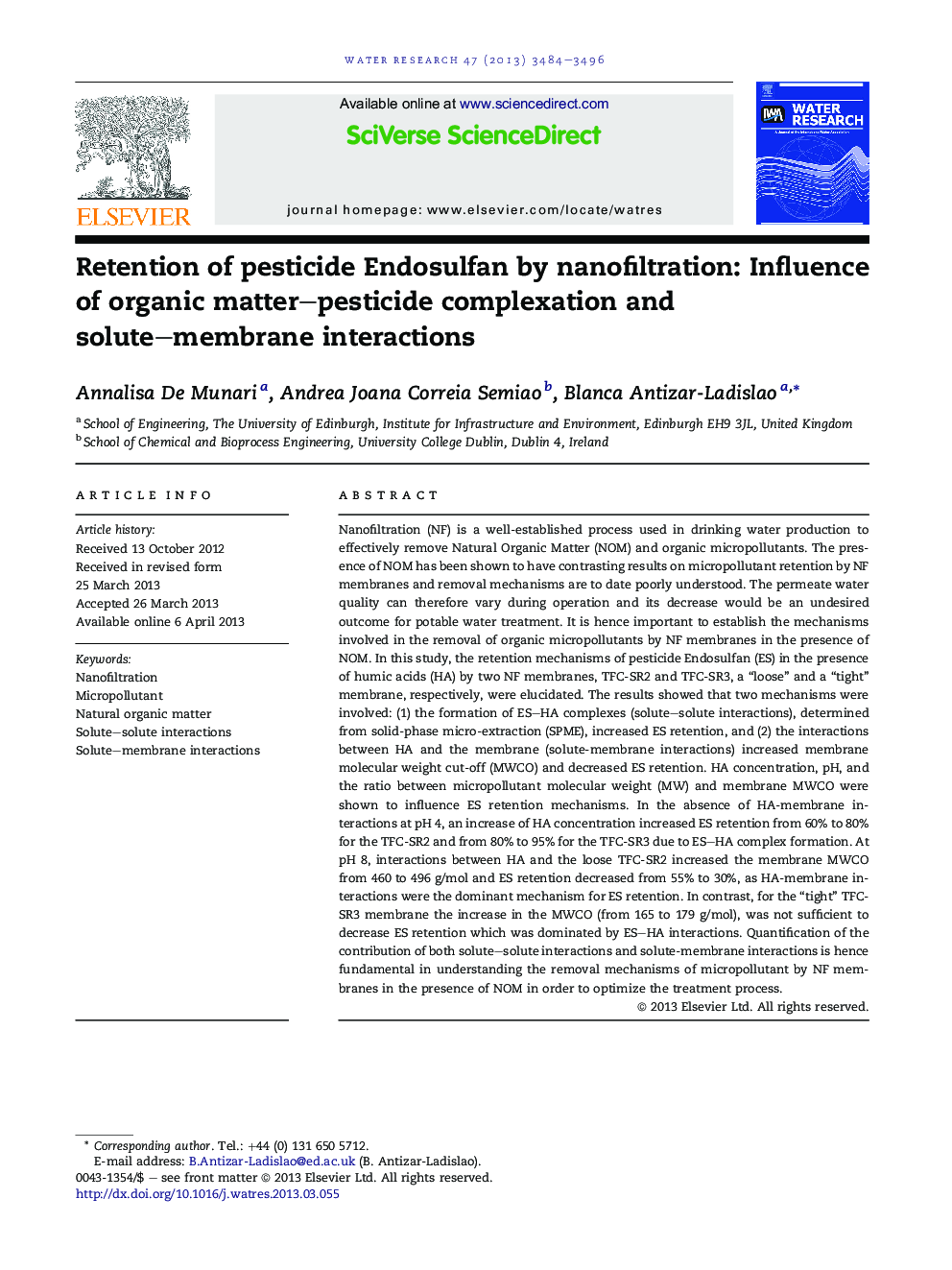| کد مقاله | کد نشریه | سال انتشار | مقاله انگلیسی | نسخه تمام متن |
|---|---|---|---|---|
| 4481812 | 1316834 | 2013 | 13 صفحه PDF | دانلود رایگان |

• Solid-phase micro-extraction was used to understand ES retention during NF in the presence of HA.
• Solute–solute and solute–membrane interactions are key in explaining retention mechanisms.
• The formation of ES–HA complexes increased ES retention.
• HA-membrane interactions increased the membrane MWCO and decreased ES retention.
Nanofiltration (NF) is a well-established process used in drinking water production to effectively remove Natural Organic Matter (NOM) and organic micropollutants. The presence of NOM has been shown to have contrasting results on micropollutant retention by NF membranes and removal mechanisms are to date poorly understood. The permeate water quality can therefore vary during operation and its decrease would be an undesired outcome for potable water treatment. It is hence important to establish the mechanisms involved in the removal of organic micropollutants by NF membranes in the presence of NOM. In this study, the retention mechanisms of pesticide Endosulfan (ES) in the presence of humic acids (HA) by two NF membranes, TFC-SR2 and TFC-SR3, a “loose” and a “tight” membrane, respectively, were elucidated. The results showed that two mechanisms were involved: (1) the formation of ES–HA complexes (solute–solute interactions), determined from solid-phase micro-extraction (SPME), increased ES retention, and (2) the interactions between HA and the membrane (solute-membrane interactions) increased membrane molecular weight cut-off (MWCO) and decreased ES retention. HA concentration, pH, and the ratio between micropollutant molecular weight (MW) and membrane MWCO were shown to influence ES retention mechanisms. In the absence of HA-membrane interactions at pH 4, an increase of HA concentration increased ES retention from 60% to 80% for the TFC-SR2 and from 80% to 95% for the TFC-SR3 due to ES–HA complex formation. At pH 8, interactions between HA and the loose TFC-SR2 increased the membrane MWCO from 460 to 496 g/mol and ES retention decreased from 55% to 30%, as HA-membrane interactions were the dominant mechanism for ES retention. In contrast, for the “tight” TFC-SR3 membrane the increase in the MWCO (from 165 to 179 g/mol), was not sufficient to decrease ES retention which was dominated by ES–HA interactions. Quantification of the contribution of both solute–solute interactions and solute-membrane interactions is hence fundamental in understanding the removal mechanisms of micropollutant by NF membranes in the presence of NOM in order to optimize the treatment process.
Figure optionsDownload high-quality image (105 K)Download as PowerPoint slide
Journal: Water Research - Volume 47, Issue 10, 15 June 2013, Pages 3484–3496